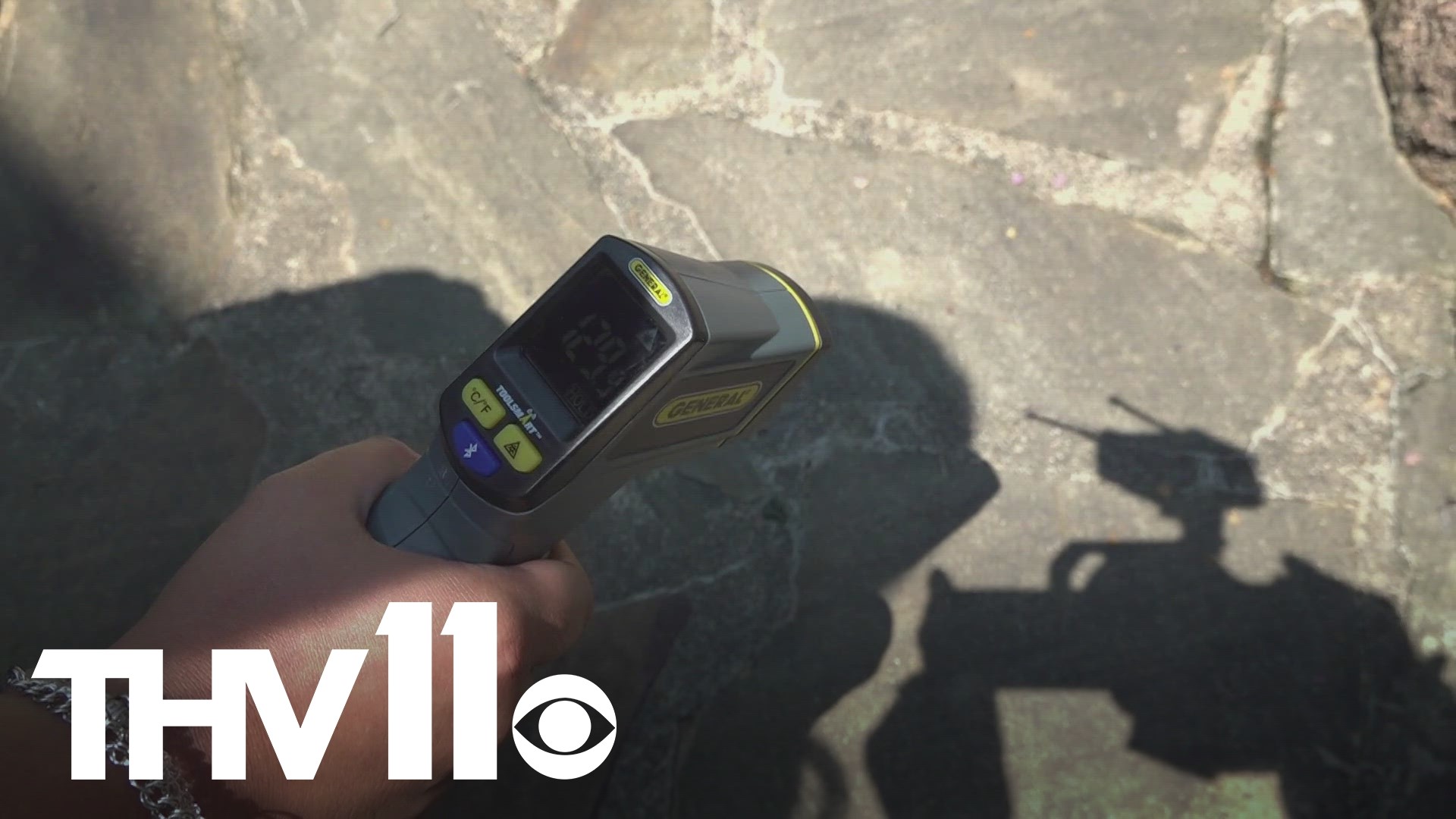LITTLE ROCK, Ark. — Everyone knows that it has been a hot summer in Central Arkansas. When you step outside you can feel it and if you spent time any time outside on Tuesday, then you probably felt those hot temperatures despite the low humidity.
Though some areas happen to be hotter than others despite the temperature being the same— the City of Little Rock has been working to track that through a technique called heat mapping.
“The urban heat island effect is when parts of densely developed urban areas retain heat and are harder to cool off,” said Brittany Nichols with the Little Rock Sustainability Office.
Little Rock is one of those areas and the sustainability office has been trying to find out where the heat is the worst by using heat mapping.
“Saturday, August 19 we're going to be going all across the city, we got nine routes, and each of those will take an hour of driving,” said Nichols.
Volunteers will drive specific routes with heat sensors on their cars— one of those routes is along 7th Street in downtown.
“On that day from 6:00 to 7:00, from 3:00 to 4:00, and from 7:00 to 8:00 pm we're going to be capturing over 50,000 data points that include temperature and humidity,” Nichols. explained.
She also said the data they collect will help them figure out how to cool things down.
“One of our greatest tools to mitigate extreme heat is green space,” said Nichols. “So, this tree and the shade it provides, it is doing a lot for this space right here.”
Shade can make a big difference in helping to provide some relief from the heat.
We went out and used an infrared thermometer to get a better idea. When we checked the temperature of the ground that was underneath shade the thermometer read 105 degrees versus where there was no shade the thermometer read 129.
“If we can install those big resilient trees in the city with this information. I think that'll be a win for the next generation,” said Nichols.
By working with experts from UAMS and the National Weather Service they hope to come up with several solutions.
“Something that we want to continue to monitor, and we might do that with schools through handheld pocket sensors,” she said. “So, this isn't the end of the heat study in little rock. It's just the beginning.”
If you would like to learn more about the heat mapping project, click here and if you'd like to volunteer to be a driver on August 19, please click here.

